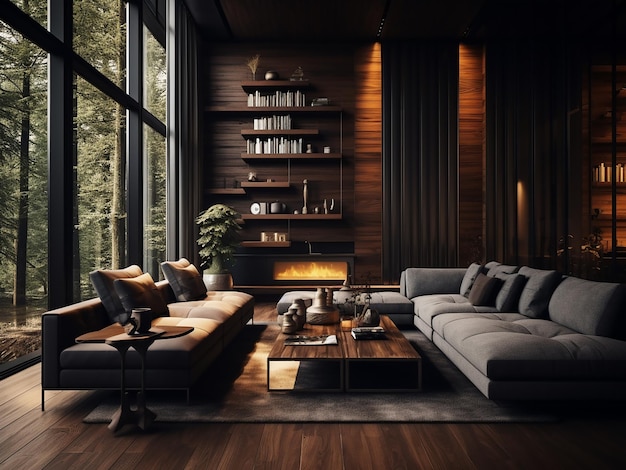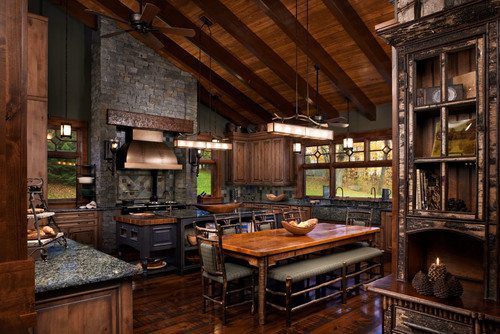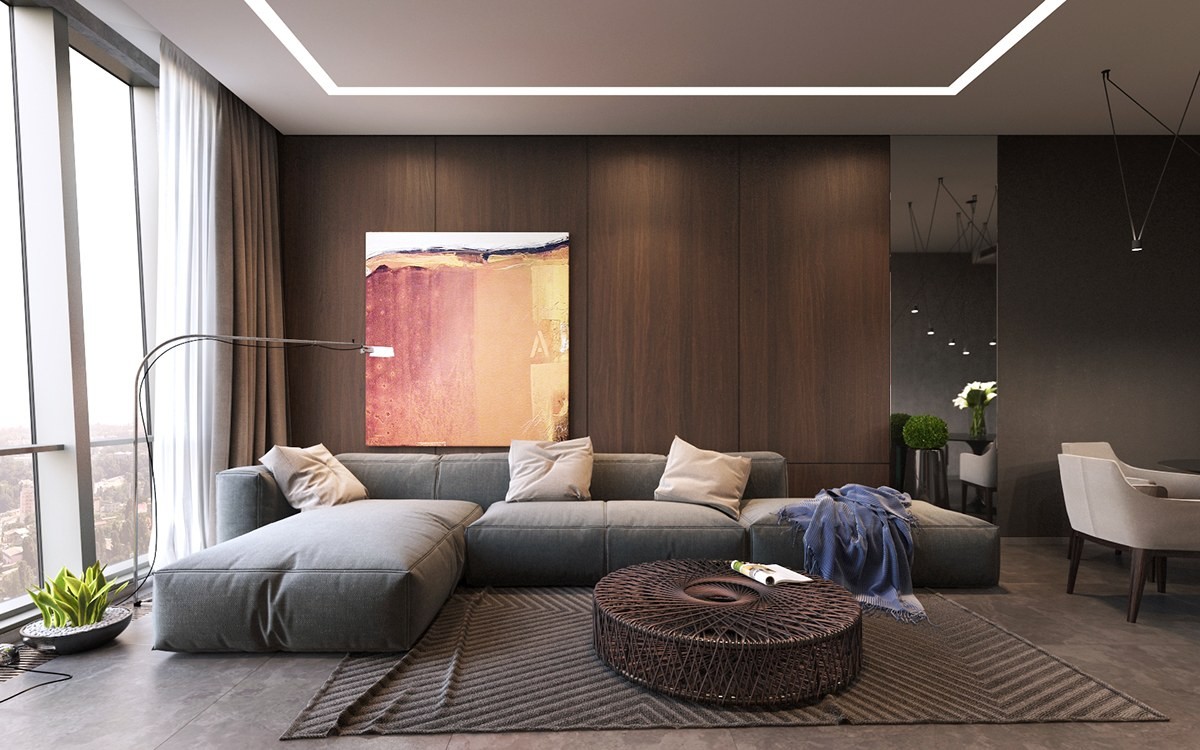When it comes to interior design, few elements evoke the same sense of warmth and sophistication as dark wood. Throughout my journey as a homeowner and design enthusiast, I’ve found that dark wood can transform a space, adding depth, character, and a touch of timeless elegance. In this article, we’ll dive into the world of dark wood interior design, exploring its benefits, potential drawbacks, and how to incorporate it seamlessly into your home.
What is Dark Wood Interior Design?
Dark wood interior design refers to the use of wood finishes that are darker in color, such as walnut, mahogany, cherry, or ebony. These woods not only add richness to a space but can also complement various design styles, from traditional to modern. The choice of dark wood can create a dramatic, cozy, and inviting atmosphere that many homeowners strive for.
Key Elements of Dark Wood Interior Design
- Type of Wood: Understanding the different types of dark wood is essential.
- Finishes: The finish can impact the overall look—high gloss versus matte.
- Complementary Colors: Finding the right colors to pair with dark wood is crucial.
- Lighting: Proper lighting can enhance the beauty of dark wood.
Types of Dark Woods
Here’s a quick comparison of popular dark wood types:
| Wood Type | Color | Durability | Cost |
|---|---|---|---|
| Walnut | Rich brown with purplish hues | Very durable | $$$ |
| Mahogany | Dark reddish-brown | Moderately durable | $$$$ |
| Cherry | Deep red-brown | Moderately durable | $$$ |
| Ebony | Jet black | Extremely durable | $$$$$ |
Advantages of Dark Wood in Interior Design
Incorporating dark wood into your home can offer several benefits:

1. Aesthetic Appeal
Dark wood exudes an air of sophistication and elegance. Whether used in furniture, flooring, or cabinetry, it can elevate the look of any room.
2. Warmth and Comfort
The rich tones of dark wood can create a warm atmosphere that invites relaxation and comfort. It’s perfect for living rooms and bedrooms where you want to unwind.

3. Versatility
Dark wood pairs well with a variety of design styles, from rustic to contemporary. It can easily adapt to your personal style and preferences.
4. Longevity
High-quality dark wood, when maintained properly, can last for generations, making it a good investment for your home.

Disadvantages of Dark Wood Interior Design
While dark wood has many benefits, it’s essential to consider the potential drawbacks as well:
1. Lighting Challenges
Dark wood can absorb light, which can make a space feel smaller or darker than it is. Strategic lighting solutions are necessary to counteract this.

2. Maintenance
Dark wood often requires more maintenance than lighter woods to keep it looking its best; dust and scratches can be more visible.
3. Cost
Quality dark woods can be more expensive than lighter options, which might be a consideration for budget-conscious homeowners.

How to Incorporate Dark Wood into Your Interior Design
Now that you understand the benefits and challenges of dark wood, let’s explore how you can incorporate it into your home design effectively.
1. Flooring
Dark wood flooring can create a stunning foundation for any room. Consider wide planks for a more rustic feel or narrower boards for a classic look.

2. Furniture Selection
Invest in key pieces of dark wood furniture, such as dining tables, coffee tables, and dressers. Mixing dark wood with lighter furniture can create a beautiful contrast.
3. Accent Walls
Create depth by using dark wood panels or shiplap on an accent wall. This can add character without overwhelming the space.

4. Cabinetry
In kitchens and bathrooms, dark wood cabinetry can provide a warm, inviting feel. Pair it with lighter countertops and backsplashes for a balanced look.
5. Accessories and Décor
Incorporate dark wood through accessories like picture frames, shelves, or decorative knick-knacks. This subtle approach can add warmth without dominating the design.
Personal Experiences with Dark Wood Interior Design
Throughout my home renovation journey, I’ve had my share of experiences with dark wood. When selecting flooring, I opted for rich walnut, which not only added elegance to my home but also felt cozy underfoot. However, I learned the importance of lighting the hard way—balancing the natural light in my living room with lamps and strategic fixtures was key to avoiding a cave-like atmosphere.
Color Pairings and Inspiration
Choosing the right colors to complement your dark wood is crucial for creating balance. Here are some colors that work beautifully with dark wood:
- White: Fresh and clean, white creates a striking contrast.
- Soft Grays: These add a modern touch while enhancing warmth.
- Muted Jewel Tones: Colors like emerald green or sapphire blue can add a rich pop.
- Earthy Tones: Colors like taupe or olive can create a natural, grounded feel.
Conclusion
Dark wood interior design offers a unique blend of elegance, warmth, and versatility. While there are challenges, with careful planning and consideration, you can create a stunning environment that feels both inviting and sophisticated. Whether you’re updating your home or starting anew, integrating dark wood can elevate your design to new heights.
Frequently Asked Questions (FAQs)
1. Is dark wood suitable for small spaces?
Yes, dark wood can be used in small spaces, but it’s essential to balance it with adequate lighting and lighter colors to avoid making the area feel cramped.
2. How do I maintain dark wood furniture?
Regular dusting and occasional polishing will help keep dark wood furniture looking its best. Avoid harsh chemicals and consider using coasters to prevent water rings.
3. Can I mix dark wood with light wood?
Absolutely! Mixing dark and light woods can create a dynamic and visually interesting space. Just be sure to maintain a cohesive color palette.
4. What rooms benefit most from dark wood?
Living rooms, dining rooms, and bedrooms typically benefit the most from dark wood due to their cozy and inviting nature. However, it can be used in any space with the right considerations.
5. What lighting works best with dark wood?
Incorporate warm-toned ambient lighting, such as floor lamps, table lamps, and recessed lighting, to enhance the attractiveness of dark wood. Natural light is also key—utilize sheer curtains to maximize it.